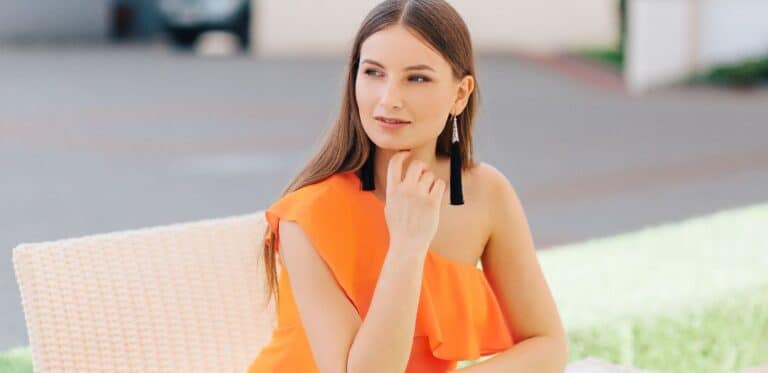How to Calculate Macros
When you start to read about fitness and weight loss, you realize there’s a lot of people talking about “macros” and how to calculate your macros. But what does that even mean? “Macros” is short for macronutrients: proteins, carbs and fat. People that talk about calculating macros are referring to a plan that defines how many grams of protein, carbohydrates and fat they should eat in a given day. If you’re wondering how to calculate macros, you’ve come to the right place! We’ll talk a little about each macronutrient, how to balance them and finally how to calculate macros.
Use the Table of Contents below to jump to a specific section, or simply scroll down to start from the top!
Table of Contents
What are Macros?
Macros are the three main macronutrients that we need to survive: protein, carbohydrates and fat.
We don’t make any of these nutrients, so all of them must be obtained from food. We also need various micronutrients that include vitamins and minerals, which we also get from our diet.
Different lifestyles and diet plans suggest that we balance macronutrients in different ratios – some low carb, some low fat, others high protein. Still, it proves vital that you consume all three of the macros in your daily diet. If you do not eat a minimum amount of each macro, deficiency diseases ensue. Eating far too much of any one macro can also prove problematic. So, balance is key.
All three macros contribute energy – or calories – in varying amounts. Micronutrients do not have calories. As a result, you can add up the total calories consumed from each macro group to determine your total caloric intake for the day.
Here’s a little more about each one of these powerhouse macronutrients and why you need them!

Protein
Protein is the building block for basically every tissue in your body. This includes muscles, skin, hair and nails. Protein also plays a vital role in your blood by making hemoglobin – the molecule that carries oxygen – and maintaining oncotic pressure to prevent bloating and swelling. The building blocks of protein are amino acids, which clump together to form larger protein molecules and ultimately your tissues & organs.
Protein Requirements
The IOM recommends that healthy adults eat 0.8 grams of protein for each kilogram of body weight. This is about 8 grams of protein per 20 pounds of body weight each day. If you’re an athlete, elderly or actively healing from a serious injury or illness, your protein requirements are slightly higher.
As a benchmark, the United States RDA for protein in adults is:
- 46 grams per day for women
- 56 grams per day for men
Still, keep in mind that these are general recommendations. Most us can eat a little more or a little less protein each day and not suffer any negative consequences. It’s also not necessary to eat this much protein every single day. Experts suggest protein-containing foods represent anywhere between 10-35% of your calories on a daily basis.
Protein Deficiency
What happens if you don’t eat enough protein for several weeks or months at a time? Kwashiorkor is the protein-energy deficiency disease characterized by eating too little protein, even while eating enough calories. Young children in sub-Saharan Africa & southeast Asia are the most affected by this disease, usually due to displacement and/or food scarcity. Thankfully, it can be successfully treated and reversed if caught early.
Protein deficiency is not common in developed countries. However, strict vegans and vegetarians may still fall victim to this condition if they do not include enough plant-based protein. Symptoms of kwashiorkor include edema, muscle wasting, skin problems, hair loss and irritability.
Foods with Protein
So, now you know you need dietary protein, but how do you get it? Not all proteins are created equal.
Protein sources can be either “complete proteins” or “incomplete proteins”. This classification is based on the foods’ possession of the nine essential amino acids. Essential amino acids are protein precursors that cannot be made by our bodies, so we have to get them from food.
Complete proteins are those that contain all of the nine essential amino acids. These are the most efficient sources of dietary protein and include animal proteins like eggs, beef, chicken and fish. Incomplete proteins are foods that contain an incomplete profile of the essential amino acids. However, many common dishes combine individual incomplete proteins to make complete proteins. Some examples of vegetarian combinations that form a complete protein are: beans and rice, hummus and pita, grilled cheese, or chili with cornbread.
Whether you choose animal sources of protein, plant sources or a combination of the two, take care to ensure that you are receiving all of the essential amino acids. You can do this by either choosing complete proteins, or by mixing incomplete proteins into complete combinations.
Also take care to choose lean proteins. Go for protein sources that are low-fat or fat-free, or which contain healthy fats. Healthy animal protein choices include: chicken or turkey breast, baked fish, lean beef and low-fat/fat-free dairy.

Carbohydrates
Carbohydrates provide your body with its favorite fuel source – glucose! Carbohydrates (or “carbs”) get a bad reputation, especially in the weight loss community, because many fattening foods like pastries, cake and cookies are considered carbs. But carbs are also found in fruits, vegetables, beans and whole gains (like quinoa), which are commonly viewed as healthy. Overall, wholesome carbs are healthy and an important part of your balanced diet. The whole trick is choosing your carbs well!
Simple vs Complex Carbs
To select healthier carbs, you should first understand the types of carbs. There are two types of carbohydrates: simple and complex. Carbs are classified into these two groups based on their chemical structure. Technically, simple carbs contain fewer polysaccharides (the base molecule of carbs) than complex carbs. However, in common usage by doctors and dietitians, the terms have been adopted to refer to carbohydrate-containing foods as a whole. In terms of food, “simple carbs” are white/starchy options while “complex carbs” include whole grains and higher-fiber foods. We’ll use these terms in the latter, more colloquial way.
Simple carbs include foods like cakes, pastries, white bread, white pasta, white rice, cookies, fruit juice and mashed potatoes. These are foods that contain high amounts of carbohydrate, but little-to-no fiber to slow digestion. As a result, they spike blood sugar and then let it crash. Many people think that blood sugar is only a concern for people with diabetes, but it really affects everyone. If your blood sugar is spiking and crashing, that’s what produces the burst of energy and subsequent hunger & grumpiness you feel after eating a bunch of sweets. So, unless you’re looking for this boost (e.g. before a big race), skip the simple carbs.
Instead, choose complex carbs. These include foods like whole-grain bread & pasta, brown rice, quinoa, beans, oatmeal, fruits with skin and veggies. All of these foods contain fiber as part of the carbohydrate. Fiber is beneficial because it slows digestion, regulates blood sugar, reduces hunger and fights constipation. Diets high in fiber have also been shown to reduce the risk of heart disease and lower cholesterol levels. Basically, fiber does all kinds of good things for your body! Choose to fuel your body with complex carbs that provide a long-lasting healthy energy to keep you satisfied until the next meal.
The American Heart Association suggests that adults eat at least 25-30 grams of fiber each day from natural sources. This means that supplements (like Metamucil) shouldn’t be your only source of fiber.
Carbohydrate Requirements
Carbohydrates should represent about half of your daily calories, with most experts recommending the range of 45-65%. Despite the bad rap they get in the weight loss community, complex carbs (like whole grains) are needed and healthy. At only 4 calories per gram, they add plenty of nutrients and bulk to your diet without packing on the calories.
Here would be your goal carb ranges for different calorie levels:
- 1200 calories/day: 135 – 195 grams of carbs
- 1500 calories/day: 169 – 244 grams of carbs
- 1800 calories/day: 203 – 293 grams of carbs
- 2000 calories/day: 225 – 325 grams of carbs
Those may seem like a lot of carbs on paper, but when you remember that most foods we eat contain carbohydrates, it adds up pretty quickly. For reference: one cup of cooked pasta (spirals) has 212 calories and over 41 grams of carbohydrates. That’s before you add the tomato sauce (more carbs) or any toppings or sides. And do you usually only eat one cup of pasta? Point is: it’s not too hard to reach these seemingly-high quantities of carbs.
Carbohydrate Deficiency (Ketosis)
In the past couple of decades, low-carb diets like Atkins, South Beach and Keto have grown immensely in popularity. The rationale behind all of these plans is similar: if you remove readily-available glucose from the diet, your body will start burning fat as energy.
Essentially, your body prefers glucose (from carbs) as it’s first and best source of energy. However, we’re adaptable beings and you don’t have enough carbs you can still function. Your body adjusts and switches to another fuel source – stored fat. As the body burns fat it produces ketones as a byproduct, and those are what we use for energy. That’s where the “keto” diet gets its name.
Ketosis and Weight Loss
Given its use of fat as the preferred fuel, ketosis proves extremely effective for weight loss in some people. You can artificially throw yourself into ketosis by abiding by a very low carb, high fat diet. So, this promise of fast weight loss and accelerated fat burn is the justification behind diet plans like Atkins and Keto. The popular Keto Diet, for example, allows only 5-10% of daily calories to come from carbs and suggests that 70-80% of calories come from fat. However, very low carb diets are hard to maintain over the long term, and some professionals raise concerns about high fat (especially high saturated fat) intake. Both of these factors call into question the viability of using very low carb diets for weight loss.

Fat
Fat isn’t the enemy. Just like carbs, we need to eat fat to survive. In the 1990s low-fat and “no fat” diets were all the rage, but it’s not actually feasible to survive long-term on a NO fat diet.
Fat is vital for many reasons apart from its role as a source of concentrated energy. Cell membranes are composed primarily of fat, as is the brain. Fats also help absorb and carry fat-soluble vitamins (A, D, E & K), which prove critical for properly bodily function. We must also obtain essential fatty acids (omega-3 and omega-6, for example) from the diet since they cannot be produced by the body.
Healthy & Less Healthy Fats
There are several types of fat. Saturated fats (primarily from animals) are less healthy than unsaturated fats (primarily from plants), and trans fats (usually from a factory) are the worst. Here’s the breakdown:
Saturated Fat
- Saturated fat comes from the fatty part of animal products. This includes butter, lard, trimmings on meat and fat in dairy products. Research suggests that eating too much fat raises LDL (bad) cholesterol and increases the risk of cardiovascular disease.
Unsaturated Fat
Unsaturated fats are chemically distinct from saturated fats because they have one unsaturated carbon bond. This means they are usually liquid at room temperature, as opposed to saturated (and trans) fats that are typically solid. Many foods contain both types of unsaturated fatty acids.
- Monounsaturated fatty acids (MUFA) are healthier fats found in plant-based oils, nuts and seeds. Major sources of MUFAs include: olive oil, canola oil, avocado and peanut butter. These foods also contain high levels of vitamin E – an antioxidant. MUFAs help reduce bad cholesterol (LDL) and risk of cardiovascular disease, while also maintaining cell function.
- Polyunsaturated fatty acids (PUFA) are the main dietary source of essential fatty acids (omega-3 and omega-6 acids) and found in plant-based foods. Major sources of dietary PUFAs include: soybean oil, corn oil, walnuts, sunflower seeds, tofu and flaxseed. Fatty fish like salmon is a good source of omega-3 fatty acids. Like MUFAs, PUFAs also prove beneficial in lowering bad cholesterol (LDL) and risk of cardiovascular disease. However, the essential fatty acids contained in PUFA also support many other biological functions (e.g. immune & neural function) as well.
Trans Fat
- Trans fat (trans fatty acids) exists predominantly as a product of industrial processes. Companies add “partially hydrogenated oil” to their products as a cheap substitute for stick butter in baked goods. Trans fats are commonly found in processed baked goods (e.g. store-bought crackers, pastries, donuts, etc.) and commercial fried food. However, many manufacturers have been moving away from the use of trans fat in recent years because of the convincing evidence showing this fat’s detrimental health effects. Research shows that trans fat irrefutably and significantly worsens cholesterol and increases risk for cardiovascular disease.
Fat Requirements
International organizations recommend adults get 20-35% of their daily calories from fat. Foods containing saturated fat should represent < 10% of calories, and trans fat should be minimized or eliminated.
The majority of fat calories should come from unsaturated fatty acids: either monounsaturated (MUFA) or polyunsaturated (PUFA). In general, MUFAs should account for about 15-20% of total energy intake, and PUFA the remaining ~10%. Cholesterol should be limited to no more than 300mg per day.
Many organizations also publish more specific guidelines for PUFA, including omega-3, omega-6, and DHA+EPA. To see an overview of these recommendations, click here.
Fat Deficiency
Eating too little fat for too long can cause a fatty acid deficiency. It’s possible to develop an essential fatty acid deficiency or a fat-soluble vitamin deficiency. A diet with less than the recommended 15% fat puts you at risk for these conditions.
Each vitamin (A, D, E & K) has its own deficiency symptoms. Too little vitamin A usually manifests first as night blindness, while a deficiency of vitamin D results in weaker bones. Vitamin E deficiency may initially show-up as muscle weakness, and too little vitamin K cause excessive bleeding.
Essentially fatty acids (EFAs) support healthy brain, skin and eyes. So, an EFA deficiency produces in problems in one or more of these systems.
How to Balance Macros
Macros can be balanced differently based on different, specific diets. However, if you are simply interested in following a healthy, well-balanced diet, the recommendations are:
- 45-65% calories from carbohydrates
- 20-35% calories from fat
- Protein equivalent to 0.8 grams per kilogram body weight
Using these guidelines, you can balance your diet and adapt to your individual needs and concerns.
- Worried about heart disease? Err on the side of caution and aim for closer to 20% fat.
- Highly active? Give your body the fuel it needs by shooting for the higher end of the carbohydrate range.
- Healing from a major surgery? Help your system out and aim for a higher number of daily calories from protein.
- If you’re following a specific diet, you may also need to use different ranges for your macronutrients.

How to Calculate Macros
Now you know ALL about the macronutrients and how to choose healthy macros, but we still need to talk about how to calculate YOUR macros. It is essentially a three-step process:
- Determine your daily caloric needs
- Define your weight loss goals and dietary needs
- Calculate your macros!
1. Determine your daily caloric needs
The first step in calculating your macros is figuring-out your daily needs. You can either calculate this manually, or use an app or website to estimate your needs. It’s easier and more flexible when you use an app because the program automatically adjusts caloric needs when you enter daily activity (exercise), but it’s also possible to arrive at a fairly accurate estimation manually.
If you want to calculate your needs by hand, you can use one of several, scientifically-derived equations. These formulas estimate resting metabolic rate (RMR) – the number of calories you need to live and carry-out basic functions at rest. That means the formula doesn’t account for you moving around and expending more calories, so you will still need to add-in any additional calories burned with activity.
a) Calculate RMR
The Mifflin-St. Jeor Equation is your best option. It is considered by many experts (including the Academy of Nutrition & Dietetics) to be the most accurate estimate of RMR in healthy populations.
Women: [10 x weight (kg)] + [6.25 x height (cm)] – [5 x age (yrs)] – 161
Men: [10 x weight (kg)] + [6.25 x height (cm)] – [5 x age (yrs)] + 5
The Harris Benedict Equation is another popular option. It is slightly older, but still widely-used. The difference in calorie estimations between Mifflin-St. Jeor and Harris Benedict proves relatively minor.
b) Adjust for Activity
Once you’ve calculated your RMR using the equations above, you then need to adjust these numbers for activity. Even if you’re not working out, you still burn calories with everyday activities like walking, eating, cooking, cleaning and driving. If you’re actively exercising, you’ll clearly burn even more.
So, to account for activity, take your Mifflin-St. Jeor result from above and multiply it by one of these factors according to your average week:
| ACTIVITY LEVEL | RMR ADJUSTMENT | |
| Sedentary | No exercise | RMR x 1.2 |
| Lightly Active | Exercise 1-3x per week | RMR x 1.4 |
| Moderately Active | Exercise 3-5x per week | RMR x 1.6 |
| Very Active | Exercise 6-7x per week | RMR x 1.7 |
| Extra Active | Hard daily exercise or physically demanding job | RMR x 1.9 |
Congratulations! You now have an estimate of your daily caloric needs.
2. Define Your Weight Loss Goals and Dietary Needs
Once you’ve defined your daily needs, you can adjust this number based on your weight loss goals.
- Want to lose 1 pound per week? Subtract 500 from the number above.
- Want to lose 1.5 pounds per week? Subtract 750 from the number above.
- Want to lose 2 pounds per week? Subtract 1000 from the number above.
IMPORTANT: It is not healthy, or recommendable, to drop below 1200 calories per day for women or 1500 for men. If adjusting your goals for weight loss causes you to drop below these thresholds, you should either go for a less-aggressive weight loss goal OR increase activity. If you eat too little, your body will think you’re starving and actually try to retain fat.
3. Calculate Your Macros!
You’ve finally reached the final step: how to calculate macros!
Take your calorie goal for the day and divide it into macros using the recommended ranges above. You can either pick a mid-range percentage and calculate approximate macro goals, or use a range to give yourself a goal macro range.
Carbohydrates and protein have 4 calories per gram. Fat has 9 calories per gram.
Since protein is the only non-percentage value, calculate it first. Then use a percentage to calculate fat grams, and then the rest of your diet is carbohydrates.
That’s it! That’s how to calculate macros!
A little confused? Would an example help? Check out the macros for our example woman below.

How to Calculate Macros: An Example
Here’s an example of how to calculate macros for a sample woman.
Sally is a 32-year-old woman who is 5’4” tall and weighs 145 pounds. She goes to boxing class about 3x per week, plus hikes with her friend on weekends. Sally would like to lose about 10 pounds, but she’s not in any rush, so her goal is to healthily lose one pound per week. She doesn’t follow any special diet and is instead interested in eating her normal foods in the right amounts for health and weight loss. What are her macros?
1. Calculate RMR
She’s a woman, so we’ll use the Mifflin-St. Jeor Equation for women.
[10 x weight (kg)] + [6.25 x height (cm)] – [5 x age (yrs)] – 161
However, we need to convert units. There are 2.2 lbs per kilogram, and 2.54 cm per inch.
145 lbs ÷ 2.2 lbs/kg = 65.91 kg
5’4” = 64 inches à 64” x 2.54 cm/in = 162.56 cm
Now, plug them into the equation:
(10 x 65.91) + [(6.25 x 162.56) – (5 x 32)] – 161 = 659.1 + 856 – 161 = 1354.1 calories
Sally’s RMR before activity is 1354.1 calories per day. However, she exercises at least 4x per week, so we need to adjust this number. We’ll multiply RMR x 1.6 since she’s moderately active.
1354.1 x 1.6 = 2166.56
Sally needs to eat about 2,167 calories per day to maintain her weight, given her current lifestyle.
2. Define Your Weight Loss Goals and Dietary Needs
Sally doesn’t follow any special diet, but she would like to lose some weight. Her goal is to lose one pound per week, so we need to subtract 500 from the number above.
2167 – 500 = 1677
Sally should eat about 1,677 calories per day to lose one pound per week.
3. Calculate Your Macros!
Since Sally eats normally, we will use the typical ranges to estimate her macros. We can base our goals on the following goals:
0.8 grams protein per kg, 25% fat
Now it’s math time! Remember that carbohydrates and protein have 4 calories per gram. Fat has 9 calories per gram.
0.8 x 65.91 = 52.7 ≈ 53 grams of protein per day
53 grams x 4 calories/gram = 212 calories
1677 x 25% fat = 1677 x 0.25 = 419.25 ≈ 419 calories from fat
419 calories ÷ 9 calories/gram = 46.55 ≈ 47 grams of fat per day
1677 – (212 + 419) = 1677 – 631 = 1046 calories from carbohydrates (62% of total calories)
1046 calories ÷ 4 calories/gram = 261.5 ≈ 262 grams of carbs per day
So, Sally’s macros are: 53g protein / 47g fat / 262g carbohydrate.
In Summary
Macronutrients are the three main types of fuel that your body needs to function properly: protein, carbohydrates and fat. Needs vary based on size, lifestyle and goals. Still, it is important you eat enough of each macro and knowing how to calculate your macros is one of the best ways to do this!
Many apps and sites provide macro calculators, but here we discussed how you can estimate your macronutrient needs by hand. The basic steps are to: calculate RMR, define goals and then calculate macros (in grams). We hope this has helped you understand the science of how to calculate macros a little bit better!
Questions or comments about how to calculate macros? Share with us in the comment section below and we’ll get back to you as soon as possible!







this helped so much, but now, how to do I figure out how to do this with the food I need to eat and apply the information????
Hi Rebecca 🙂 The easiest way to do it is to download an app (such as MyFitnessPal or LoseIt) to help you figure-out your general macro goals, and then enter your food and drinks each day to measure how you’re doing with achieving those goals. Hope that helps! If not, just let us know and we’ll do our best to answer your questions.
Zack, HTLW team
Should I recalculate the numbers each week so I know what to add and subtract when I start losing lbs and or fat?
Hi Adam,
As long as you don’t go over each macronutrient by more than 5 grams, or under by more than 10 grams, you should still see results. No need to stress about it on the daily.
Hope that helps!
Zack, HTLW team